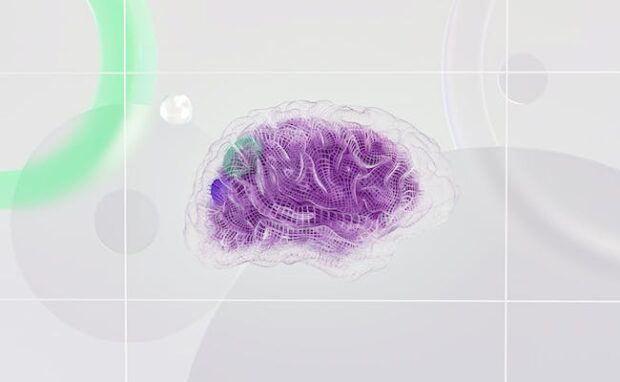Brain chip lets people control home devices with their minds
Johns Hopkins Medicine researchers created a brain-computer interface (BCI) that enabled an ALS patient to control home devices with his mind. Amyotrophic lateral sclerosis removed the man’s control over his muscles, but the brain chip lets him open light switches and other home appliances. As a result, this technology could help more people live normally.
Technology has advanced healthcare for many years, enabling us to beat previously incurable diseases and surmount disabilities. The brain-computer interface could be the next step in that progress, letting severely impaired individuals take control of their homes and lives. Believe it or not, some companies try to make similar implants for the global market.
This article will discuss how the Johns Hopkins team created a brain-computer interface. Later, I will cover more brain implant projects from Neuralink and others.
How does the brain chip work?

Eurekalert reported on the story of the Johns Hopkins brain-computer interface. It starts with baseball fan Tim Evans, who was diagnosed with amyotrophic lateral sclerosis (ALS).
It is a progressive nervous system disease that causes muscle weakness and the loss of speech and motor functions. The science update site said he struggles to speak and swallow food.
Fortunately, Evans regained more control over his life thanks to Johns Hopkins’ BCI, which links his brain with external smart devices. He received it after joining a Johns Hopkins Medicine clinical trial.
A special algorithm translates his brain signals into six computer commands: up, down, left, right, enter, and back. Evans uses these to navigate options on a communication board that controls smart devices like streaming TV apps and room lights.
Johns Hopkins installed the BCI as two electrocorticographic (ECoG) grids on the surface of Evans’ brain. They record the electrical signals transmitted by brain cells or neurons.
You may also like: AI algorithm prepares for drone-filled future
The ALS patient worked with the researchers for several weeks to train his BCI to recognize his neuron signals as he repeated six on-screen commands. Afterward, Evans issued the same verbal commands to control a communication board in real-time.
The verbal stage was repeated for five minutes daily over three months. Shiyu Luo, the brain chip study’s first author, said, “While Tim’s speech was difficult for most human listeners to understand, the BCI was able to accurately translate his brain activity into computer commands, allowing him to navigate to and select items on a communication board at his own pace.”
“In addition to expressing how he was feeling or what he wanted, Tim was able to use the BCI to turn a light on and off and to select videos to watch on YouTube,” he added.
What are the other modern brain chip projects?

Neuralink is also trying to create a brain chip for controlling gadgets with your mind. However, he wants everyone to use it, including those without brain conditions.
DJ Seo, a Neuralink co-founder, demonstrated how the company would install such chips into a human brain. He showed a robot surgeon inserting threats into parts of a mannequin’s brain.
Seo explained that only a robot has the precision required for a safe procedure. Installing 64 threads takes roughly 15 minutes and is too small for human hands.
“Imagine taking a hair from your head and sticking it into jello covered by saran wrap, doing that to a precise depth and precision, and doing that 64 times in a reasonable amount of time.”
You may also like: Scientists reconstruct Pink Floyd song from brain waves
You would need to recharge your Neuralink chip. However, the co-founder explained that the company will offer fast charging that prevents magnetic interference.
Also, Osaka University created an artificial intelligence that can read minds and turn them into pictures using DALL-E 2 and Stable Diffusion. They submitted brain scan images from functional magnetic resonance imaging (fMRI) to the artificial intelligence.
Next, it decoded the brain waves and used text-to-image tools to turn them into images. As a result, the Osaka AI can visualize your thoughts or read your mind. At the time of writing, the study yielded 80% accuracy.
Conclusion
Johns Hopkins researchers created a brain chip that enabled an ALS patient to control smart devices with his mind. As a result, the man regained control of his life despite his condition.
Nathan Crone, M.D., professor of neurology at Johns Hopkins Medicine, said, “For those who have lost their ability to communicate due to a variety of neurological conditions, there’s a lot of hope to preserve or regain their ability to communicate with family and friends.”
“But there’s still a lot more work to be done to bring this to all patients who could use this technology,” he added. Learn more about the latest digital tips and trends at Inquirer Tech.